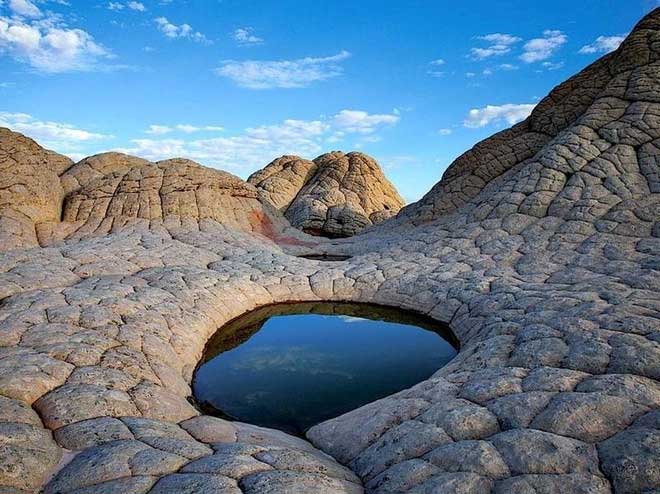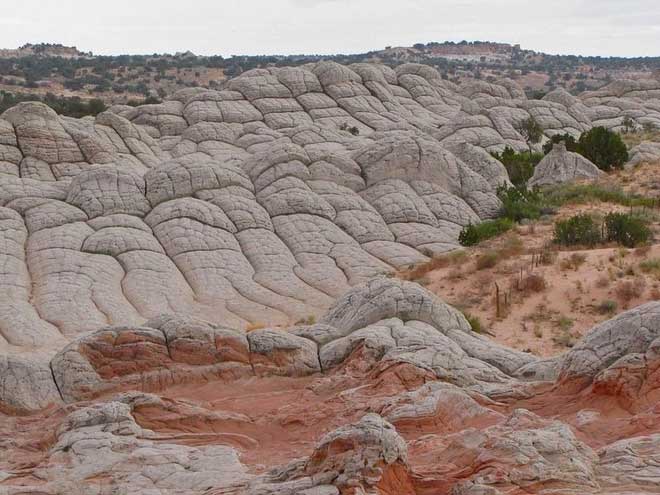In the area of Vermilion Cliffs National Monument, Arizona, USA, there exists a region of sandstone with uniquely vibrant colors and shapes. This area is known as White Pocket, or colloquially referred to as “cauliflower rock”, nestled deep within a desert landscape.
The entire area is covered by a layer of striking gray-white rock, giving the landscape an appearance reminiscent of pure frozen ice. In some places, the layers of rock twist completely, resembling a gigantic marble “cake.”
The “unique” sandstone region in the USA
Strange geology at White Pocket is not easily explained. Some geologists believe that White Pocket is the result of “soft sediment deformation,” a process that occurred during the Jurassic period when the sand was saturated and before it fully turned into rock.
According to retired geologist Marc Deshowitz, who studied White Pocket for many years, this landscape is the result of a massive landslide of sand, triggered by an earthquake, that broke away from a high dune and quickly slid down the slope.
When this large mass of sand fell, it filled a large lake or oasis. This substantial sand mass is the special gray-white sandstone, also known as “cauliflower rock,” that can be seen today.

The sandstone area of White Pocket in the USA.
More than a decade ago, not many tourists were aware of White Pocket. This area was primarily known to local ranchers and a handful of adventurous photographers.
Then, the American National Geographic magazine published a story about Vermilion Cliffs National Monument, featuring some stunning photos of White Pocket. Since then, White Pocket has quickly gained fame. Today, White Pocket ranks among the top destinations for hiking enthusiasts and outdoor activities.
White Pocket is a relatively small area but stands in stark contrast to its surrounding environment. The dominant colors here are shades of white or light gray. The landscape is captivating and “photo-worthy.”

The landscape here is quite eye-catching.
Similar to the Coyote Buttes area, some rock formations at White Pocket are very delicate and can be damaged if too many visitors come each day. Fortunately, the “cauliflower rock” area is naturally difficult to access, so visitor numbers are not overwhelming.
To reach White Pocket, travelers need to use a high-clearance vehicle due to the deep sand. When visiting White Pocket, tourists often “stop by” to also explore the Coyote Buttes area. The best times for photography at White Pocket are during sunrise and sunset.


















































